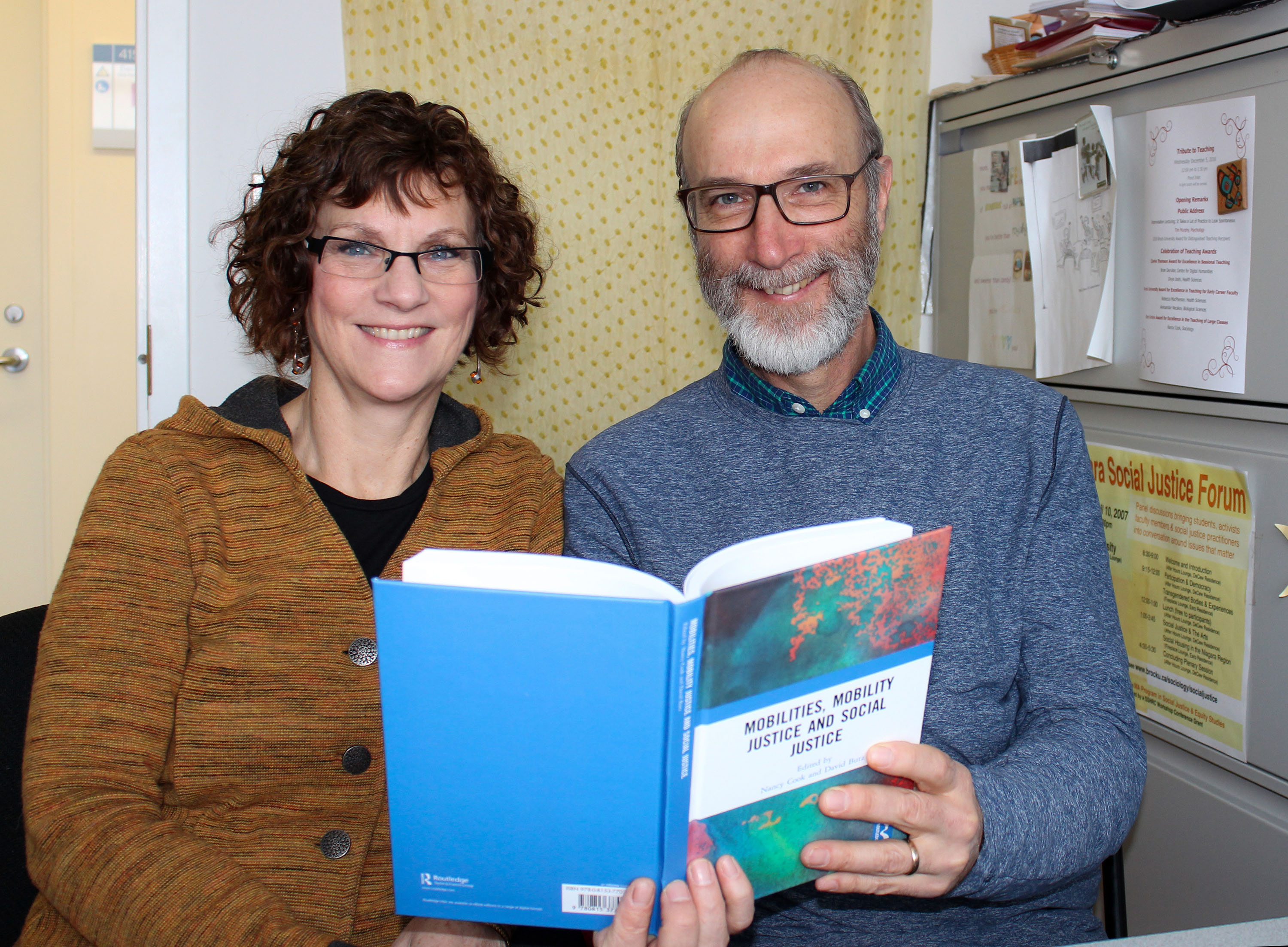Having choices about when, where and how to move — and when to stay put — is at the core of mobility justice, a new concept that is developing at the nexus of mobility studies and social justice scholarship.
A recently published book, Mobilities, Mobility Justice and Social Justice, edited by Nancy Cook, Associate Professor of Sociology, and David Butz, Professor of Geography, explores “the ways social inequities are constituted in relation to mobility,” says Cook.
The newly established field of mobility studies looks at the differential flows of people, ideas, food and animals, and the related infrastructures that facilitate such uneven mobilities, such as roads, trains, airplanes, fibre optic cables and the internet.
“Mobility justice is a concept developing in the mobilities literature that examines how differences in mobility capabilities can contribute to social inequalities,” says Cook.

Mobilities, Mobility Justice and Social Justice, edited by Nancy Cook, Associate Professor of Sociology, and David Butz, Professor of Geography, explores how social inequities are constituted in relation to mobility.
The topics and regions represented in the book exemplify the “deeply transdisciplinary nature” of mobility studies, she says. “It has put us in contact with a whole different set of scholars from all over the world who we didn’t have access to before.”
Contributing authors, who come from philosophy, gender studies, communications studies, architecture, transport planning, public administration, geography and sociology, were asked to think about and analyze particular mobility-related injustices using specific social justice concepts.
“This was to strengthen the justice focus of mobility analyses, and to bring thinking about the mobility-based aspects of injustice to social justice theorising,” says Cook.
The result is a diverse collection of empirical case studies that illustrate how “different scales, types and facets of mobility interact with particular kinds of social relations to (re)produce inequalities,” she says. Chapters explore issues such as LGBTQ communities’ access to public space, global air travel, ferry service, urban cycling, forced migration, food waste and even tick migration.
“Most chapters in the book are interested in access or impediments to movement, the way certain sorts of movement are imagined ideologically, and how that shapes people’s access to social justice or shapes inequitable social relations,” says Butz.
Butz and Cook saw first-hand the social justice implications of mobility infrastructure in their SSHRC-funded research project on the Shimshal Road in Pakistan. During the road’s construction, locals looked forward to a time when they would not have to carry everything on their backs through the mountains. However, the effects of switching from a pedestrian to a vehicular mobility regime have been complicated.
“We actually see a deepening of particular kinds of inequalities by age and gender,” says Cook. Men and students are “differentially benefitting” from access to this new mobility platform in relation to women and older adults.
According to Butz, mobility justice is more than simple efficiency of movement.
“We see social class and social advantage manifested in the way people travel. The trip from St. Catharines to Toronto is different for the person on the bus, in a car or on the Go train,” he says. “These experiences work into people’s identities and understandings of themselves in relation to the world.”
Mobility justice is as much about staying in one place as it is about access to movement. It’s about the ability to make choices in relation to mobility. “Many commuters would prefer to work near where they live and not feel compelled to move,” says Cook. Infrastructure enables people to live far away from their jobs but relegates them to cheaper suburbs and long commutes.
Like social justice, mobility justice is most often noticed in its absence.
“We get at justice by looking at injustice,” he says. But there are movements towards mobility justice, at least for some people. “An accessibility regime at a university is a positive example of achieving social justice for a group through a focus on enabling their mobility.”
The two say their interest in mobility justice emerged from and is supported by their work with the Social Justice and Equity Studies program and the Social Justice Research Institute.
“Mobility justice has taken our research in a really new direction which has been very exciting,” says Cook.
STORY REPOSTED FROM THE BROCK NEWS

